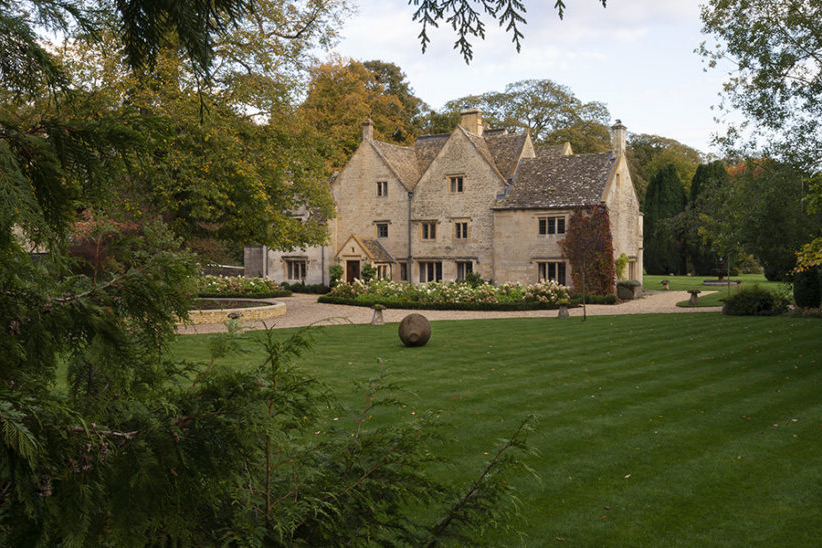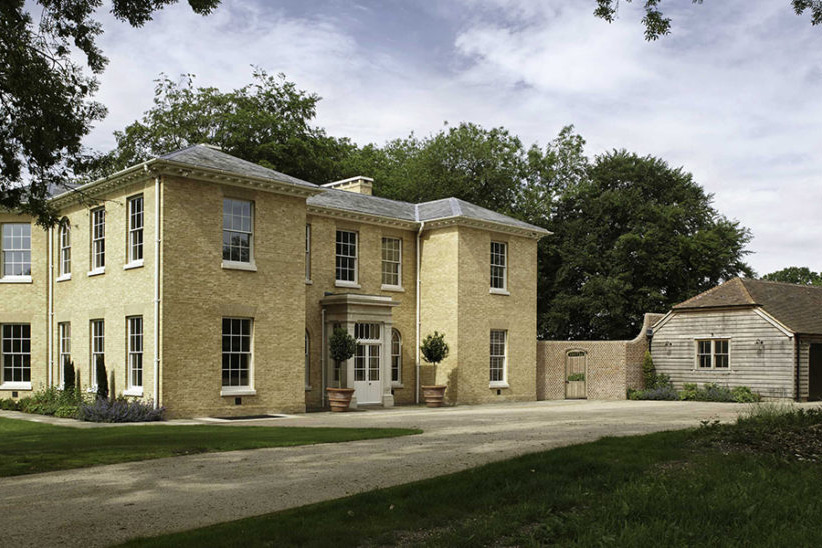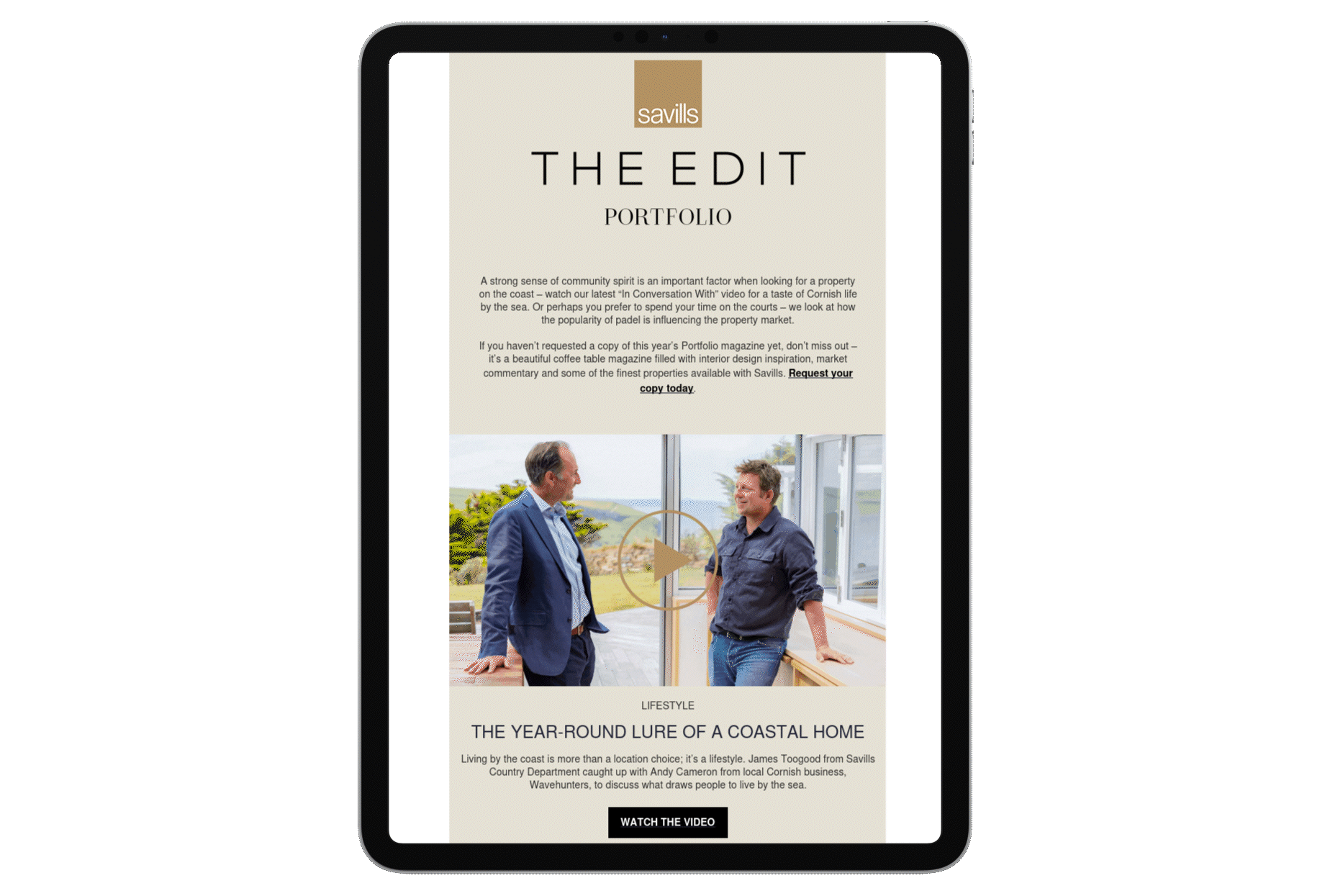Renowned architects George Saumarez Smith, a director at ADAM Architecture, and Richard Parr, founder of Richard Parr Associates, share their thoughts on building country houses with Lindsay Cuthill and discuss the merits of traditional and contemporary style.
Lindsay Cuthill: I sense we are going through something of a country house renaissance. Do you agree?
Richard Parr: There hasn’t been this level of interest in commissioning and building country properties for many decades. We’re in an exciting new age of country house building. It’s not about ostentation; our clients are proud to create these new houses as a legacy for future generations.
George Saumarez Smith: Yes, clients who are looking to build a country house usually have a long-term ambition in mind. They want to know that we can design their house in such a way that it is flexible for future changes of use, such as when children have grown up and left the family home.
LC: Our clients will often brief us to find a classical Georgian house or else find a plot to build a new country house. They appear to be more open to the concept of building a house from new.
GSS: Twenty years ago, many people wouldn’t have dreamed of building a new house. It wasn’t compatible with traditional English taste, which likes things to be a bit worn and a bit frayed around the edges. But now there are more architects who can design new classical houses. Also, there are many restrictions on what you can and can’t do to a historic building. So, the idea of building a new house has become much more attractive.
RP: I also think that the distinction between town and country has merged. These days, a client will have the same aspirations for a country house that they have for a town house. It used to be accepted that your house in the country was a bit damp and draughty and the electricity was unpredictable. That has totally changed, and prospective owners expect all the technology and services they enjoy in the city.
LC: Does the decision to commission a country house come down to a classical or modern style?
GSS: It seems dated to be just talking about style because there are so many more important things to consider, not least establishing a better balance with nature and how buildings interact with the environment. Having said that, there is still a stylistic difference between Richard’s buildings and mine. I suppose the difference now is a recognition that either approach can work if it is done with skill and conviction.
RP: It’s a 1980s view that there is a fight between classicism and modernism, and we’ve all moved on. I don’t think there are two camps; it’s about the journey in creating something. We are both responding to a landscape and a brief. Where that journey takes us may be different but just as valid.
GSS: Style is a useful reference point for potential clients but what Richard and I have in common is an approach to design that starts with the local landscape. We look at the local vernacular, using natural materials that are appropriate to the setting.
LC: You both reference the importance of the landscape, but isn’t an estate something of a luxury for many people?
RP: We should dispel this myth of grand estates with hundreds of acres. We are designing new build houses in plots that are sometimes just two acres. Clients are thinking of a multi-use house that is designed around the requirements of a family. They are looking to create a lifestyle that is about multi-generational use, a level of self-sufficiency and carbon zero technology. They are applying ethics and redefining the brief of a British country house.
GSS: The great tradition of country houses assumes a large estate and husbandry of the land. We occasionally work on projects like that, particularly with existing historic houses, but I would describe many new houses as being more like a villa set in a compact landscape setting. Clients are increasingly interested in a degree of self-sufficiency. That may mean being off grid in terms of energy and growing some of their own food. This is where the modern country house tradition becomes very interesting because it picks up on the aspirations that you see in the early 19th century, such as a greater connection with nature, an interest in gardening and the importance of natural light. They don’t want a house that requires a lot of maintenance, or lots of staff to keep it running.
LC: How much do you reference the past in your work – whether traditional or contemporary design?
RP: There are many lessons from country houses and previous historic buildings, but I imagine we draw on them in completely different ways and come up with completely different results. The interesting thing is that history repeats itself. For example, houses from the medieval period were open but centred around fireplaces and family living. People are living in open-plan spaces in a very similar way as they did in mediaeval hall houses.
GSS: The history of the country house is also the history of innovation. New technology, such as the first use of the electric light or the use of hydro-electric power, was first seen in country houses. What Richard’s and my clients have in common is wanting to have the best in the latest technology.
A certain flexibility of layout is important – which I feel is a lesson from history – but I think the most important lesson is finding that connection with nature. That is really what makes the country house different from other building types.
RP: There are people who enjoy being a custodian of an historical building and are prepared to make those compromises with it. We have a client who is restoring a listed manor house and they are academic and conservation-led, and this is a fascinating journey. We also have clients who don’t want to be a slave to historical layouts or details because they are just finding a new lifestyle.
LC: A lot of people moved to the countryside as a result of the pandemic. How has this affected your work?
RP: When we’re talking to a client, we look at the landscape, the setting, the locality and the spirit of the place – we spend a lot of time working on these before we even put pen to paper. It’s a journey of three or four years and a major lifestyle decision.
GSS: The pandemic has been a factor, but most clients are seeking flexibility in their lifestyles. One of the first discussions I have with a client is to imagine what the house will be like in 10 years’ time.
LC: Do you have a signature style? I would assume that both of you have something about your projects that is recognisably ‘you’ in their work?
RP: If somebody wants to commission a country house, I don’t think George and I would be on the same list for the same client. The thing we enjoy is to bring the most out of the client and create something that is individual in every case.
GSS: For me, I think it would be very difficult to choose an architect without going to see one of their buildings. I always say to people whether you choose me or somebody else, you must go and look at one of their houses in the flesh.




